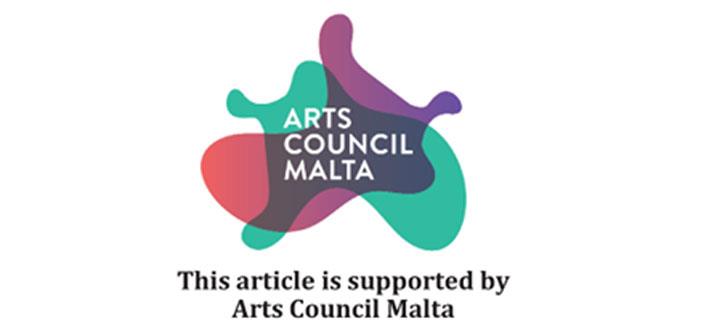Next at il-Kamra ta' Fuq is Rupert Cefai with his exhibition titled 'ante', running until the 8th of October. I visited Ruper Cefai's studio many times and I have to admit that the works that have always intrigued me most are his figurative-cheeky ones. Of course, what better way to collaborate than an exhibition that merges his figurative style with the editorial cartoon? Pure bliss. A quick side note - if you plan to visit Rupert's studio, do take some pastizzi with you (peas and ricotta) - he'll be happier to see you.
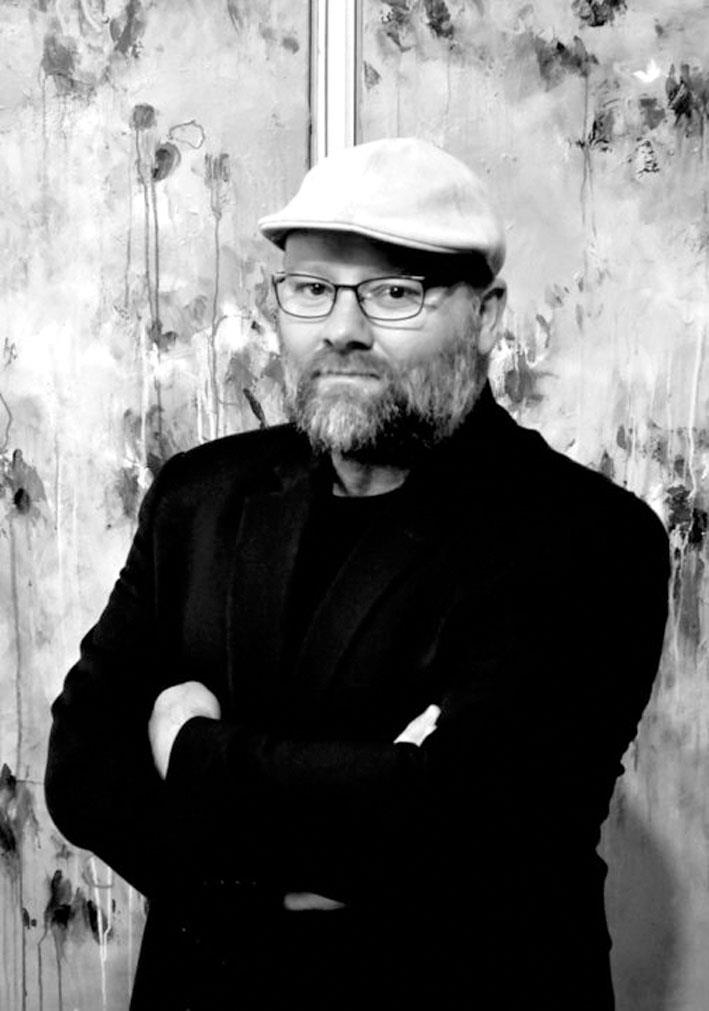
A very renowned and versatile artist, Rupert Cefai doesn't need much of an introduction, but for the record, he hails from a background of interior design and editorial cartoonist. Since 2008 he has been a full-time artist and his works have ranged from the figurative and landscapes to the abstract, but still always adhering to his signature style clearly seen in his particular use of paint and brushstrokes. For his exhibition 'ante' Cefai is presenting a body of works where he is going back to his days as an editorial cartoonist and amalgamating this art into his figurative painterly work.

This collection of works shows a critique of aspects of contemporary society and is quite specific to our islands, as can also be perceived in the use of artworks' titles in Maltese. The scenarios derive from various strata of our community, dealing with subjects such as environmental degradation, power and its frequent abuse, truths, and beliefs.

For those not familiar with editorial cartoons, the formula is quite a 'simple' one. Step 1, find a subject matter, then combine 2 completely unrelated everyday 'objects' and use them to send a very direct and acerbic message. Another important aspect of editorial cartoons is the inclusion of speech bubbles, labels, or text. Very intelligently, Cefai replaces this aspect with the titles of his exhibition artworks. Keeping all this in mind, it is finally time to start delving into some of these artworks.
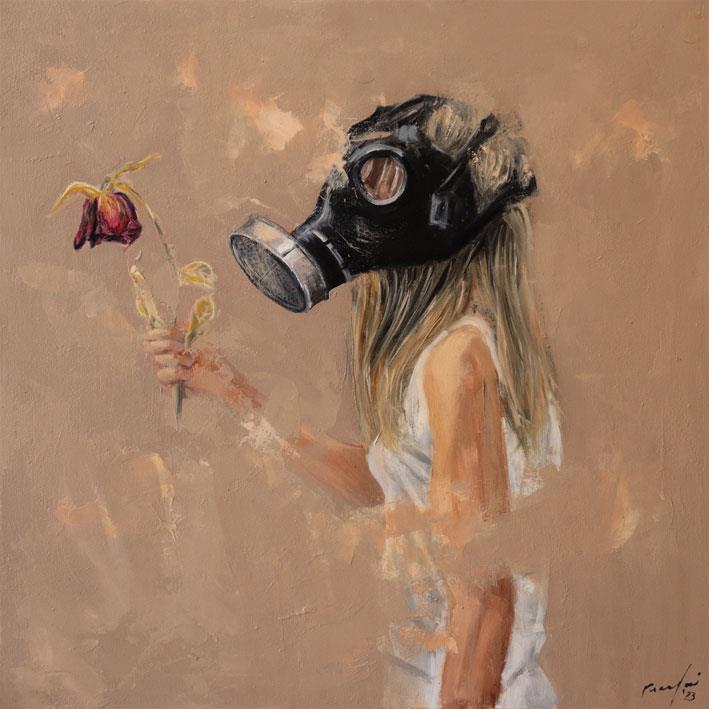
As happens most of the time, I have a favorite. The artwork 'anġlu bellu' is not for the faint-hearted. A depiction of an almost life-size cardinal, sporting a black (latex) goth-punk-plague-doctor mask, a pair of black peep-toes stilettos, a pair of fluffy white wings, and armed with a red and white swirling lollipop. Quite subtly depicted, at the bottom of the painting, one finds a couple of cabbages, which in Maltese, 'kaboċċi' hints at other meanings. The play in the 'painting techniques' used for this painting is quite a bravura. Cefai executed the lollipop in a more realistic rendering than the rest of the painting, which makes this prop pop out of the composition and almost lures the viewer to accept the goodie.
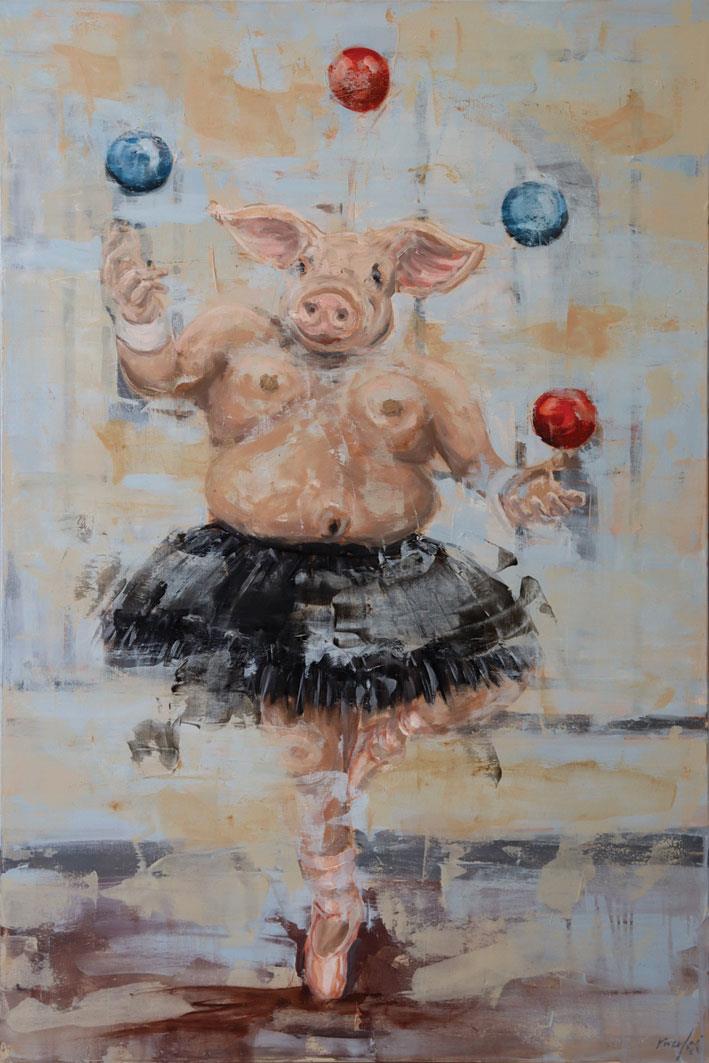
The diptych comprising 2 small works, 'the snack - a before' and 'the snack - an after' is perhaps a reminder of the original sin, both executed in a very realistic manner. One shows a juicy untouched apple, and the other shows the infamous bitten apple, both executed on a plain background giving zero hints and leaving all the focus on the main subject - the sin.

Two artworks show figures of the beloved knights of St John, wearing the typical black robe with the white eight-pointed cross, and adorned with unexpected paraphernalia. 'baħar u storja II' is almost a classical example of an editorial cartoon. Our knight in full-length standing pose is sporting a pair of children's swimming trainers, swimming goggles, and a pair of flippers. By merging our history with our other main tourism selling point - the sea, Cefai is hinting at the overdose of tourism overflooding our country. The background is just a blank canvas, which hints at nothing else of much interest to offer to the visitors.
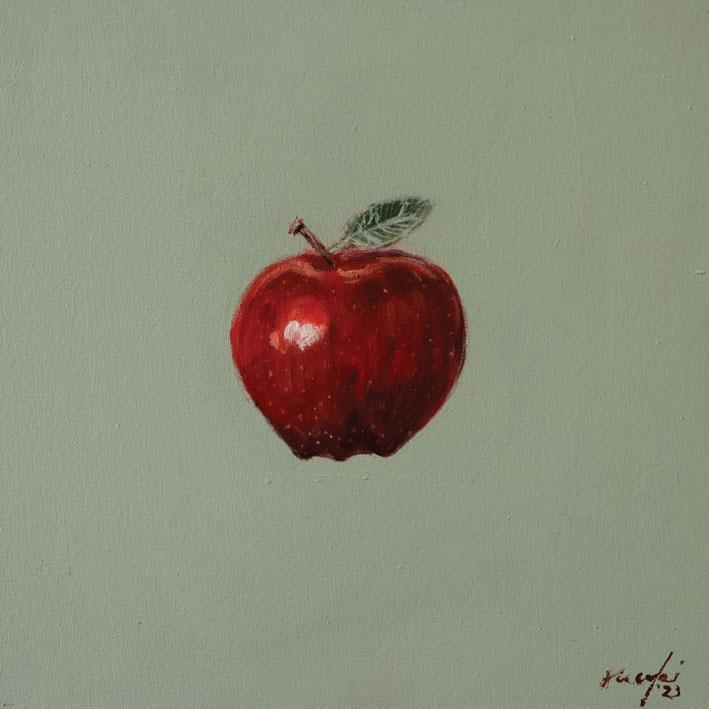
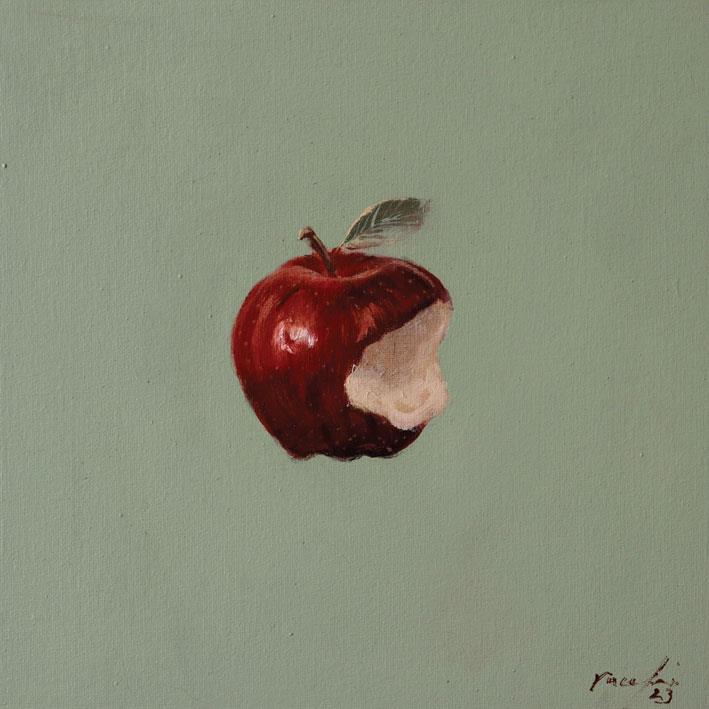
The aviator of broken dreams' highlights the 'Peter Pan' in some of us, who literally don't want to grow up. Thanks to perhaps the most complex composition in this series, Cefai takes us to a kids' playroom. An adult female wearing child-like undergarments is squeezed into a rocking horse/chair - she looks happy to be stuck in this situation of oblivion. Perhaps chasing dreams of visiting incredible places, hinted by her old-school aviator helmet and goggles, and holding an old-school wind-fan toy (minn tal-festa, the real toys, before we were flooded with the 'Made in China').
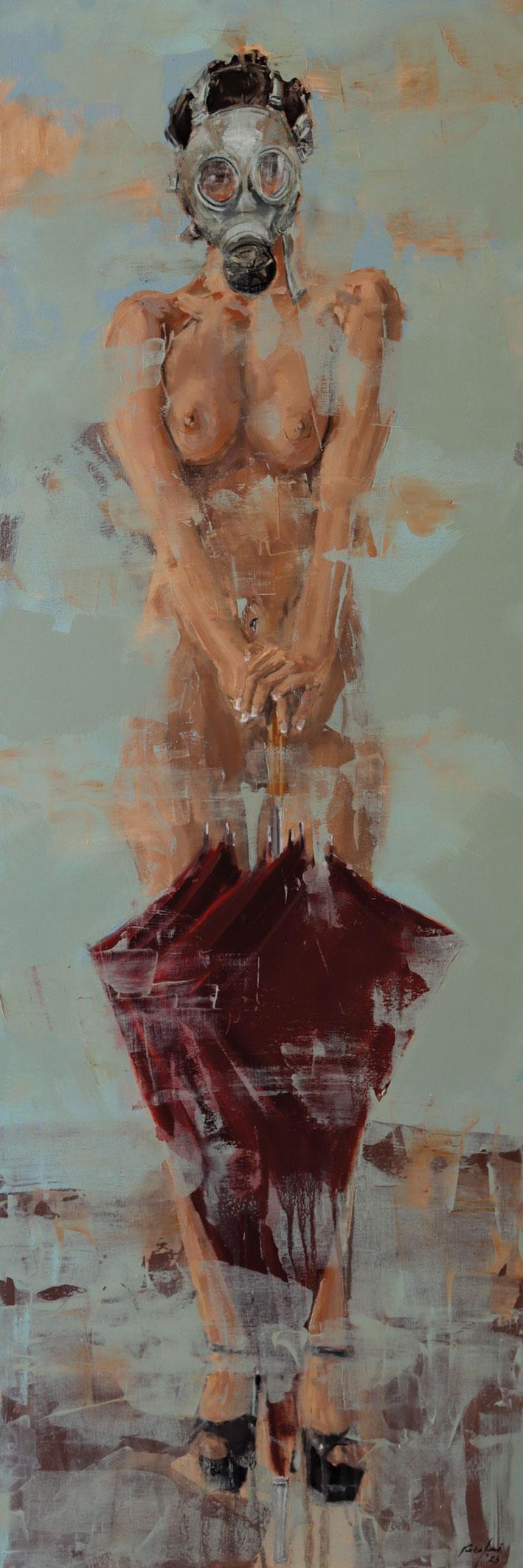
The pig is a recurring subject in Cefai's oeuvre. An unforgettable one was this huge pig wearing a gold Rolex, titled 'ħanzir ta' Malta'. Here we have another pig, this time with a pocket-watch, attached to his right ear, instead of the ear tag. The artwork 'time up' shows a severed pig's head, positioned on a base of splashing blood. Interesting to note the time on the watch, 10:10, l-għaxra u għaxra in Maltese, which I leave to your own conclusions.
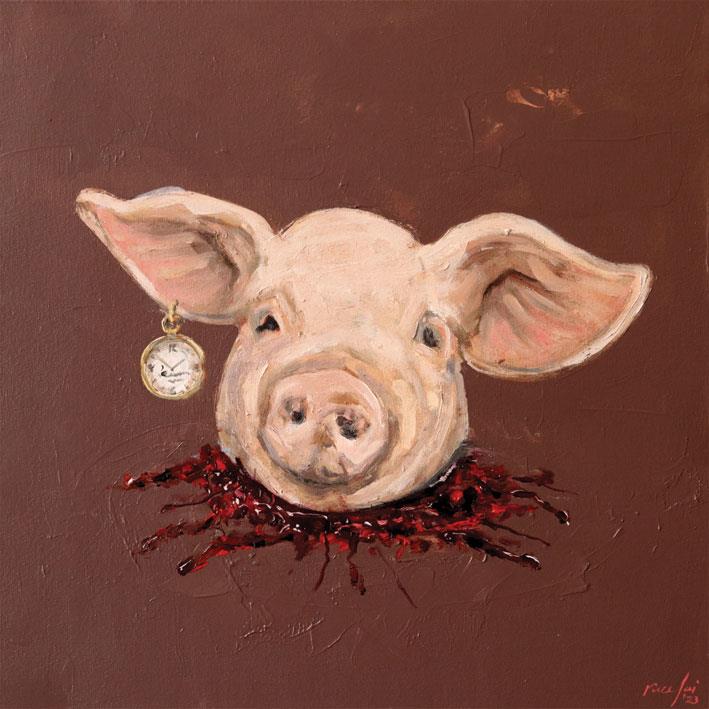
Another pig in the show is 'ħanżir u primadonna' where the Maltese pig is seen as a symbol of greed (titħanżer). The artist chose to portray it also as a prima ballerina, showing a feat in multitasking while going en pointe and juggling blue and red balls as a statement of its control on power.
The artwork 'lie to me' portrays a dainty ballerina, her head is adorned with a large spiked tiara, resembling a saintly halo. She is wearing a carrot mask over her nose. The long carrot symbolizes the liar's long nose and in this case, the corruption of saintly beauty and a reminder that all that glitters is not gold.
Two putti reminiscent of flamboyant rococo-style depictions show twisted versions of the 'innocent' angels, and again the title here brings to mind one of the commonest and rudest Italian phrases, 'Figli di putti'. One of the works shows the putto as a clown, with the iconic red nose and an olive branch wreath - the universal symbol for peace, which again has another current war connotation. The second work shows the little angel wearing an anti-gas mask - a prop that features in other works in the series which of course hints at the 'slow' (or not so slow) destruction of our planet. A case in point is the artwork 'girl in mask and flower' where a girl is wearing the mentioned mask, as a daily accessory in a not-so-distant dystopian future and appreciating a dying rose, as if it were an ethereal experience.
Another of my very favorites is 'the storm is over'. A very long and narrow canvas showing a female nude wearing a pair of black stiletto sandals and an anti-gas mask. She is supporting herself with a closed red umbrella. She is squeezing herself to make sure to fit in the narrow canvas which is reminiscent of a posed social media post. No matter the storm we face, the end of the world as we know it, and the lack of basic things in life like clothing - all that matters is that perfect superficial photo.
These works are all strong conversation pieces, imbued with symbolism and sarcasm, sometimes subtle and most of the time straight in your face, with the aim to make us think about what we take for granted in life.
The exhibition title 'ante' is suggestive of an imminent 'gambled stake', which can be perceived both in the various themes and scenarios that the artist chose to portray which are all daily situations that we choose to accept to live in until someone tries to open our eyes and then it's a gamble when we are facing Morpheus and we need to decide to either take the blue pill or the red pill.
The exhibition 'ante' is on till the 8th of October, at il-Kamra ta' Fuq. For more info, follow il-Kamra ta' Fuq on Facebook/Instagram.
